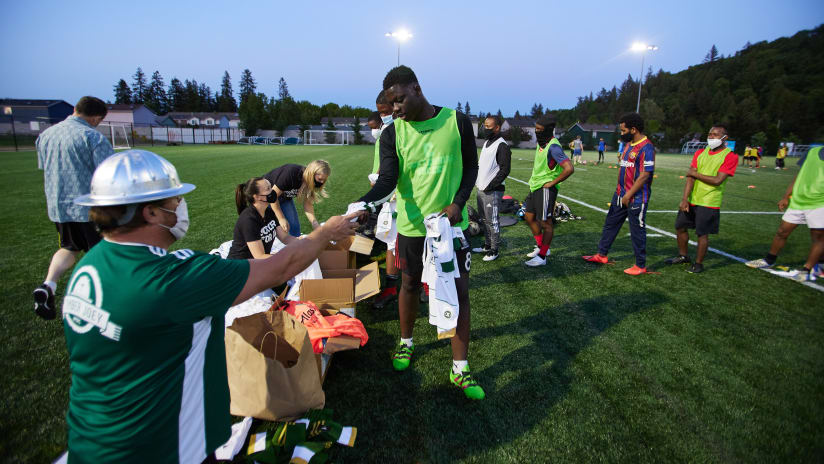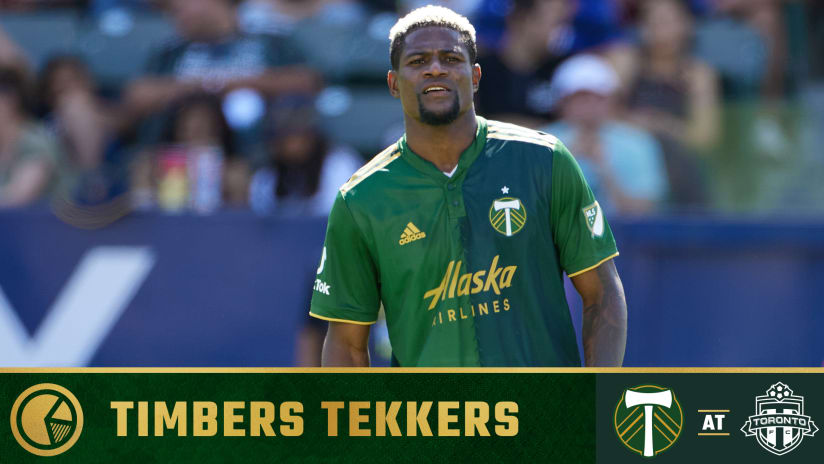PORTLAND, Ore. — Five months into the Covid-19 pandemic, Jose Campos felt compelled to do more. He had his life in soccer — he’d worked with the Oregon Youth Soccer Association before, and had been a match official and a head coach at a Salem-area community college — but something was calling on him to contribute at a different level. For him, it was time to shift course.
“I always worked in soccer,” he says, “but this year I wanted to work in soccer in a way that helped the community."
Last August, Campos became the Program Development Manager for the Portland chapter of Street Soccer USA, an organization dedicated to “improv[ing] health, education, and employment outcomes for the most disadvantaged Americans by using sports …” That mission originally launched programs for the homeless but has since expanded to other areas. Street Soccer is now in 16 cities across the U.S., with Portland’s branch having programs that target five different groups.
“Just taking someone and putting them in a team, giving them the same responsibility as everybody else and being like, ‘hey, we are working together toward the same goal,’” Campos says, “’and you're one of us. We need to rely on you, and you can rely on us. And we're always here for you …’ That, just simply that — being on a team — is a huge help in the social burden for them.”
Easing that burden goes beyond the field. Street Soccer is more than an organization that believes in the power of teamwork. The organization’s staff spends significant time finding things like food and hygiene donations, as well as developing partnerships that can facilitate access to needed social services.
For Campos, a Spaniard who earned a Masters in Business Administration from the University of Oregon in 2017, Street Soccer was the way to change course. “I got more involved with Street Soccer USA because this year, between the pandemic and social movements like BLM, I really wanted to help.”
When Campos started his new job, though, he found an organization unable to get its players on the field. The Covid pandemic has been particularly hard on those whose jobs can’t be done from home — who live in multi-generational households, in denser neighborhoods, with limited or no financial flexibility. Those are the exact challenges Street Soccer tries to tackle, but because of the distance created by Covid, the chapter was unable to help.
“As a society, we moved everything online,” Campos remembers, “to Zoom meetings, and things like that. But it is really hard to move sports to an online session.
“We had another problem. Some of our participants, unfortunately, do not have the means to use that kind of method. They don’t own a laptop. They don’t have access to a way to view that info. The internet, for example. And if they do, they have one laptop for like six or seven family members, or they have a very small apartment with three or four families. When everybody was working out from home, our participants didn’t have the space to do it.”
Last August, we were still figuring out the efficacy of masks. We were assessing the danger of fomite transmission, and the psychological effect of lives in isolation. It’s easy to forget how much we’ve moved forward. But as we race to get vaccinated and define a new normal, it’s worth remembering the fear we harbored. Back then, our urge to progress was being balanced by our fears of the unknown. And for some communities, that balance was more perilous.
“I was never too worried about our young kids,” Campos says. “Some of them are six to 12 years old. The CDC says they're not too much at risk. But the problem is they live at home with grandparents. Or they live at home with parents. If they pass it to the grandparents, then we have the problem of that person being extremely at risk.
“If they pass the virus to their parents, these are normally families that work, and they're not people who work online. They're essential workers. Two weeks without working and getting paid is a huge burden.”
The first step to getting back to soccer was help from above. Campos has had to become an expert in implementing guidelines and best practices, but much of that framework was developed at Street Soccer’s national level. Freed from worrying about developing those standards, Campos could focus on Portland’s unique challenges.
The main one was where to play. Portland Street Soccer has five main programs, most of which rely on indoor facilities. Community centers, for example, are easy for players to access, typically linked to partners, and are already hubs within their communities. But between masking, distance requirements and restrictions on indoor activity, Street Soccer needed a new model. When training resumed, it did so at the Eastside Timbers & Thorns Sports Complex in Gresham – a location that isn’t practical for some of Campos’s players.
“The progression has been from moving from online sessions and filming videos to send to them to actually be at practice get to see our kids,” Campos says. “Once we're out with them, that’s is when we can have our relationship …
“Now, since we are back in person, we're back to only providing these soccer sessions to everybody and those social skills but also those social services with them, and helping them any way we can.”
Then there’s just the reality of Covid. Even among those who could make it out to Gresham, there are those who don’t feel comfortable, yet. Activity outside is safe, especially if people stay masked, but to what extent is any risk worth it? Each player has a different context for the risk they’re willing to inherit.
“From being at home 24-7 in a crowded space to going back on the field, running, playing, having fun, it's amazing to see that joy in their faces,” Campos says. “But at the same time, I know that at least half of our participants are [not] in a situation to provide a session for them, because they cannot make it to where we are right now, or they're still concerned about Covid. We still have a lot more work to do.”
Campos has three of Portland Street Soccer’s five programs back up and running, now. A fourth will become active again next month. The homeless program will take a little longer. “Where we are right now is very inaccessible for them,” he says. With coaches becoming vaccinated and guidelines changing, moving back indoors could become possible, soon. Until then, attendance will still be down.
For now, Campos estimates attendance as about half of what he’d like. That may be why Campos feels “fifty-fifty” about where the chapter is, now. “I'm happy that we got back to serve our community,” but “it's just not the same.”
“I'm happy because I can see in my kids' faces that are going back to play, going back to seeing their friends, their coaches have brought a lot of joy to their lives.”
As the summer arrives, “fifty-fifty” will improve. All of our lives are going to move forward. That Portland Street Soccer is in a position to advance, though, is a testament to how they tackled the last eight months. Street Soccer is outlasting the pandemic, as well.
Donations recently allowed Portland Street Soccer to connect 16 of its players with new laptops. Likewise, on Wednesday night — and as part of MLS’s Soccer For All week — Stand Together made a donation of equipment and apparel to the chapter. Click here for more information on Street Soccer, and here for more information on Soccer For All.













